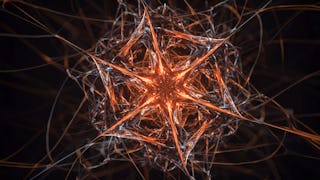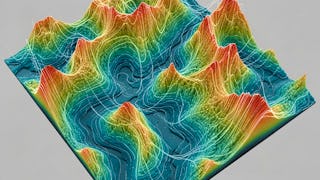This course is designed to empower intermediate-to-advanced Unity developers with the skills to design, construct, and implement advanced rendering workflows using Unity’s built-in shader system. Through a structured approach involving real-world shader authoring practices, learners will progressively analyze, apply, and evaluate transformation matrices, camera systems, multi-texture sampling, gamma-space correction, and texture blending techniques.



Unity: Design & Implement Advanced Rendering Effects
This course is part of Advanced Unity Projects: RPG, Level Design & VFX Specialization

Instructor: EDUCBA
Access provided by Flinders University
Skills you'll gain
Details to know

Add to your LinkedIn profile
10 assignments
August 2025
See how employees at top companies are mastering in-demand skills

Build your subject-matter expertise
- Learn new concepts from industry experts
- Gain a foundational understanding of a subject or tool
- Develop job-relevant skills with hands-on projects
- Earn a shareable career certificate

There are 3 modules in this course
This module introduces learners to the foundational concepts of rendering and transformation in Unity. Beginning with the rendering pipeline and coordinate systems, it progresses through spatial transformations such as translation, rotation, and scaling. By combining these transformation matrices, learners will understand how to manipulate objects in 3D space and control the virtual camera’s view. These essential techniques form the basis for creating visually coherent and dynamic scenes in Unity.
What's included
13 videos4 assignments
This module delves into the core principles and practical techniques of writing shaders in Unity. It introduces learners to the structure and function of SubShaders, surface shaders, and properties, progressing to compilation techniques, texture integration, and advanced sampling behaviors. Through hands-on examples, students gain the skills to customize surface appearances, manage GPU-based logic, and debug shader workflows for optimized rendering.
What's included
7 videos3 assignments
This module explores advanced techniques for controlling texture behavior and blending in Unity. Learners will gain hands-on experience with multi-texture sampling, gamma space correction, texture splatting, and the use of RGB slate maps for efficient material layering. The module emphasizes practical shader implementation to produce rich and dynamic surface effects suitable for complex environments and real-time applications.
What's included
4 videos3 assignments
Earn a career certificate
Add this credential to your LinkedIn profile, resume, or CV. Share it on social media and in your performance review.
Why people choose Coursera for their career









